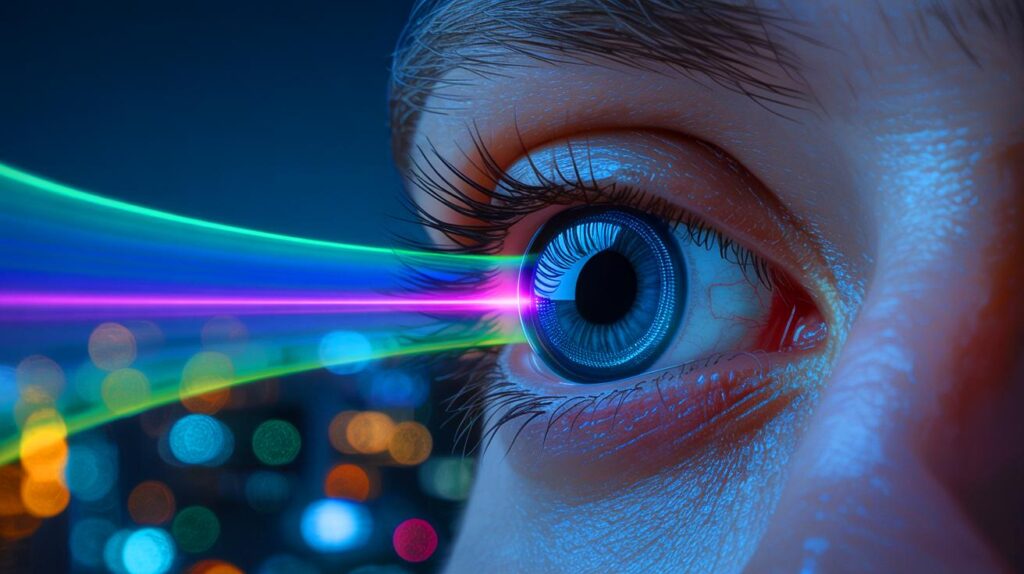Sure! Here’s a rewritten version of the content you provided with titles formatted as requested:
<div class="post-content-wrap has-share-float">
<div class="post-share-float share-float-c is-hidden spc-social-colors spc-social-bg">
<div class="inner">
<span class="share-text">Share</span>
<div class="services">
<a href="https://twitter.com/intent/tweet?url=https%3A%2F%2Fwww.innovant.fr%2F2025%2F05%2F25%2Fnous-pouvons-voir-dans-le-noir-les-yeux-fermes-ces-lentilles-infrarouges-transforment-la-vision-humaine-en-veritable-superpouvoir%2F&text=%C2%AB%20Nous%20pouvons%20voir%20dans%20le%20noir%20les%20yeux%20ferm%C3%A9s%20%C2%BB%20%3A%20ces%20lentilles%20infrarouges%20transforment%20la%20vision%20humaine%20en%20v%C3%A9ritable%20superpouvoir" class="cf service s-twitter" target="_blank" title="Twitter" rel="nofollow noopener">
<i class="tsi tsi-twitter"></i>
<span class="label">Twitter</span>
</a>
<i class="tsi tsi-facebook"></i>
<span class="label">Facebook</span>
<i class="tsi tsi-linkedin"></i>
<span class="label">LinkedIn</span>
<i class="tsi tsi-whatsapp"></i>
<span class="label">WhatsApp</span>
<i class="tsi tsi-envelope-o"></i>
<span class="label">Email</span>
<a href="#" class="cf service s-link" target="_blank" title="Copy link" rel="nofollow noopener">
<i class="tsi tsi-link"></i>
<span class="label">Copy Link</span>
<span data-message="Link copied successfully!"></span>
</a>
</div>
</div>
</div>
<div class="post-content cf entry-content content-spacious">
<figure class="wp-block-table">
<table>
<tbody>
<tr>
<td><strong>In Brief</strong></td>
</tr>
<tr>
<td>
<ul>
<li>🔬 Revolutionary contact lenses allow seeing <strong>infrared</strong> light without a power source.</li>
<li>🐭 Tested on mice, they show genuine <strong>infrared</strong> perception with clear visual responses.</li>
<li>👁️🗨️ Human trials reveal enhanced <strong>infrared</strong> vision even through closed eyelids.</li>
<li>🔍 Potential applications in <strong>security</strong>, assisting the visually impaired, and other innovative fields.</li>
</ul>
</td>
</tr>
</tbody>
</table>
</figure>
<p>Recent technological advancements are presenting us with surprising innovations that push the limits of our human capabilities. Among these is the development of infrared contact lenses that allow the viewing of light invisible to the human eye. This ambitious project, led by a team of researchers, promises to transform our perception of the world and open new avenues across various fields, from security to assisting the visually impaired. As we delve into the details of this fascinating technology, let's explore how it could change our everyday lives.</p>
<h2>From Mice to Morse Code, and Multicolored IR Detection</h2>
<p>The researchers initially tested these lenses on mice, which demonstrated a real ability to perceive infrared light. In the presence of infrared light, the mice systematically avoided illuminated areas and exhibited pupil constriction as well as brain activity in visual centers. These tests confirmed the lenses' effectiveness in detecting infrared light.</p>
<p>During human trials, participants were able to perceive Morse code flashes from infrared LED sources and determine the direction of incoming signals. Intriguingly, vision improved when participants closed their eyes since infrared light penetrated the eyelids with less interference from visible light. The researchers also adjusted nanoparticles to encode different infrared wavelengths in color, thereby enhancing detection capability.</p>
<h2>Towards the Future: Enhanced Resolution and Broader Applications</h2>
<p>While revolutionary, current lenses have limitations. Proximity to the retina disperses converted light particles, reducing image clarity. To address this challenge, the team developed a portable device similar to glasses using the same nanoparticle technology, which provides higher resolution infrared images.</p>
<p>This technology could also assist color-blind individuals by converting visible red light into visible green light. Current lenses only react to strong NIR sources from LEDs. Researchers aim to increase sensitivity to detect lower levels of ambient infrared radiation in natural environments. Collaborating with experts in materials and optics may enable the creation of a lens with finer spatial resolution and enhanced sensitivity.</p>
<h2>Potential Applications and Innovations in Security</h2>
<p>The potential applications for these lenses are vast. In security, they could facilitate information transmission via flashing infrared light in contexts of safety, rescue, encryption, or combating counterfeiting. These lenses could also provide crucial help to visually impaired individuals by enabling them to perceive visual signals invisible to the naked eye.</p>
<p>Moreover, the ability to see through eyelids offers unique prospects for nighttime operations or in low-light environments. This technology could be integrated into wearable devices for military use or rescue missions in dangerous settings, thereby increasing the safety and effectiveness of operations.</p>
<h2>Remaining Challenges and Development Perspectives</h2>
<p>Although this technology is promising, challenges remain. Optimizing image clarity and sensitivity to low levels of infrared light is a key objective for researchers. The team plans to collaborate with materials and optics experts to overcome these technical obstacles.</p>
<p>Miniaturization and ergonomics of devices are also crucial aspects to improve for broader adoption. Concurrently, ethical and regulatory considerations must be addressed to ensure the use of this technology complies with safety and privacy standards. Ongoing research in this field could pave the way for new innovations that will transform our interaction with both the visible and invisible worlds.</p>
<p>As researchers continue to develop these innovative lenses, many questions remain. How will this technology influence our perception of the world and our interaction with our environment? What new applications might emerge from this ability to see the invisible?</p>
<div class="source">The author utilized artificial intelligence to enrich this article.</div>
</div>
</div>
<div class="a-wrap a-wrap-base a-wrap-6">
<form id="mc4wp-form-1" class="mc4wp-form mc4wp-form-2917" method="post" data-id="2917" data-name="Innovant.fr">
<div class="mc4wp-form-fields">
<div id="smartmag-block-newsletter-3" class="widget ts-block-widget smartmag-widget-newsletter">
<div class="block">
<div class="block-newsletter">
<div class="spc-newsletter spc-newsletter-b spc-newsletter-center spc-newsletter-sm">
<div class="bg-wrap"></div>
<div class="inner">
<div class="mail-bg-icon">
<i class="tsi tsi-envelope-o"></i>
</div>
<h3 class="heading">Join Our Newsletter</h3>
<div class="base-text message">
<p>News, investigations, analyses: every morning, our selection for a great start to your day.</p>
</div>
<div class="main-fields">
<p class="field-email">
<input type="email" name="EMAIL" placeholder="Your email here" required>
</p>
<p class="field-submit">
<input type="submit" value="Subscribe">
</p>
</div>
</div>
</div>
</div>
</div>
</div>
<label style="display: none !important;">Leave this field empty if you're human: <input type="text" name="_mc4wp_honeypot" value="" tabindex="-1" autocomplete="off"></label>
<input type="hidden" name="_mc4wp_timestamp" value="1748189250">
<input type="hidden" name="_mc4wp_form_id" value="2917">
<input type="hidden" name="_mc4wp_form_element_id" value="mc4wp-form-1">
<div class="mc4wp-response"></div>
</div>
</form>
</div>
<script async src="https://platform.twitter.com/widgets.js" charset="utf-8"></script>Feel free to let me know if you need any more modifications!







